2024-12-09 18:29:54|Myriagame |source:minecraft skins
Editor's note: This article introduces the chemical lines in version 5.09.31, which focuses on the polymer part in the chemical line. After that, the intermediate products and some stalks are interested. After all, what we want is only the final product.Help climb the science and technology line.
In this article, green means that low pressure can be performed, orange -yellow represents medium pressure, and red represents high pressure.
Polymer class:
One category here is the plastic we often call. In the new version, a bunch of new plastic is also emerged with the revision of the petrochemical line. Everyone uses our slogan to warmly welcome them: FXXK The Johannesgaessler!
Polyethylene (PE):
It is very wide and can make plastic substrates, machine shells, etc.
synthesis:
1. Ethylene and compressed air units react to generate melting polyethylene.
2. or ethylene in programming circuits: == 2, in the large chemical reactor kettle, tetraonic titanium chloride and air reaction to generate polyethylene.
※: Compressed Ethylene Ethylene: Polyethylene = 1: 1; Titanium Titanium chloride-air-based polyethylene ethylene: polyethylene = 1: 1.5.
Jujibanamide (Nylon-6):
Miss This is the line made by our latest Gray technology. It is completely different from the original line. If you don't believe it, you can pick it up into wool.
synthesis:
Petroleum and nitrogen powder react to form a melting melting gel latlamide.
use:
Ji Ji Larnam strip placed 32 lines in the line rolling machine.
Polyzhenylene sulfe (PPS):
Polyzide sulfur foil is used in the insulation of the 2048V voltage and the level above cable.
synthesis:
① Stir with sulfur powder and sodium powder to generate sodium sulfide powder;
② Benzene and chlorine gas in programming circuits: == 2 reaction to generate dichlorobenzene;
③ Reaction to dichloropine and sodium sulfide powder generate melting melting polybenzene sulfonin.
Silicon rubber:
Silicon rubber is also used to assemble cables with 2048V and above, and is one of the synthetic materials for LUV machines.
Methane, before 31, can only be used as a low -value fuel with low heat value, or the best process is to electrize it.Now, it has re -won new life!He can be used to make silicone rubber!
synthesis:
1. Polymailing siliconxane line:
① Methane and chlorine gas generates chloride and chloride;
② The chlorofnane and silicon powder react to generate di metrachlorite silicane;
③ Di metachloroblane is solved under the action of water to generate polybikes silicide and dilute hydrochloric acid;
④ Polymidal silicide silicone molten sulfur fixture is cured to generate melting silicon rubber.
2. Violent synthetic line:
Silicon powder and epoxy patelide react to form a melting silicon rubber.
Polytetrafluoroethylene (PTFE):
Used to make polytetrafluoroethylene shells, etc.
synthesis:
① methane and chlorine gas in programming circuits: == 3 react to generate chloroform;
② Hydrogen and fluoride reaction to generate hydrofluoric acid;
③ The reaction of chloroform and hydrofluoric acid generates tetrafluoroethylene;
④ Tetrafluoroethylene generates melting polyetrafluoroethylene under the action of oxygen/air.
Polyethylene (PVC):
Polyethylene is used in the insulation during the 2048V voltage and above wire assembly, which can greatly reduce the consumption of rubber.
synthesis:
① Ethylene and chlorine gas reaction to generate ethylene and hydrochloride;
② The reaction of polyvinyl chloride and compressed air units/oxygen units to generate polyvinyl chloride.
Polystyrene (PS):
Used to make a diner.
Synthetic (ethylene-styrene-polystyrene line):
① Ethylene and benzene reaction generates styrene and hydrogen;
② The response of styrene and compressed air units generate melting melting polystyrene.
Butadie benzene rubber (SBR):
Tutonopene rubber is used for the insulating layer of 2048V voltage and above. At that time, you can only relentlessly abandon the original sulfide rubber (you are not working with the rubber polying of isoprene!).
Synthesis:
① Use the lycraryhery and butadiene, add oxygen/air (or catalyst titanium titanium titanium titanium titanium titanium titanium titanium titanium titanium titanium titanium);
programming circuit settings
The unit raw phenylphenylene powder consumption
Unit tinglobenopene phenylene powder consuming bifoth
The unit racked phenyl phenyl-titanium tetrachloride "Units of the units of phenyl phenyl powder consume air/oxygen
3
36 MB
108 MB
none
2000MB air
3
24 MB
72 MB
none
1333MB oxygen
4
24 MB
72 MB
4.4MB
500MB air
4
18 MB
54 MB
3.3MB
500MB oxygen
※: It can be seen that adding titanium chloride and replacement of air with oxygen can help generate more butto phenylene rubber.
② Sulfin pink moltenized p -pink fixture to generate melting phenyl phenylberry.
epoxy resin:
Epoxy resin is mainly made into a board for manufacturing circuit boards.
synthesis:
Plug-in bisphenol A-oxide propopylene-sodium hydroxide line:
① Stir in acetic acid and raw lime powder to obtain a calcium acetate solution unit;
② Calcium acetate solution unit obtain acetone unit;
③ Stir with salt and water into salt water;
④ Cycs of saline electrolyte into sodium hydroxide powder, chlorine gas and hydrogen;
⑤ The chlorine gas and benzene react to generate chlorobenzene and hydrochloric acid;
⑥ Sodium hydroxide powder and chlorobenzene react to generate salt and phenol;
苯 Hydrochloric acid, phenol, and acetone react to generate melting bisphenol A;
⑧ Propylene and chlorine gas reaction to generate hydrate and hydrochloric acid;
Plose chloride, water and mercury reactions are generated (or you use chlorine and water reactions to generate secondary chloride);
Polychloride, sodium hydroxide powder and hydroxide pine oxide propionide;
A melting bisphenol A, sodium hydroxide powder and oxide propylene reactions generate melting epoxy resin.
Because the process is relatively long, with the line diagram:
Total consumables: 4000MB of water, 1000MB benzene, 2000MB acetic acid, 1000MB hypochloride, 1000MB propylene; 4 salt (recycling), 1 raw lime powder.
Total products: 1000MB epoxy resin, 4000MB hydrogen.
Total consumables and total products after the level:
Consumption: 72000MB of water, 18000MB benzene, 36000MB acetic acid, 18000MB hypochlorite, 18000MB propylene; 4 salt, 18 raw lime powder.
Production: 18000MB epoxy resin (125 ingot and other amounts), 72000MB hydrogen.
Note: Epoxy resin can also reduce the process. Epoxyxide, nitric oxide and petroleum oil can also directly synthesize epoxy resin, but it is not recommended to do it in large quantities, so it is not formula.There are two more synthesis methods. Although the process of reducing the synthesis is still powerful, so it is as much as possible. In addition, epoxy patelles can be synthesized with carbon powder, chlorine gas and liquefied petroleum gas.
raw rubber powder:
Used to make rubber.
synthesis:
1. Corporation or extraction of viscous resin.
2. Ethylene-isoprene-raw glue line:
① Ethylene and acrylic reactions generate isoprene and hydrogen;
② Antipeutne and compressed air unit react to generate raw rubber powder.
polyetate ethylene:
It is used to make glue ... right is the glue made by centrifugal sticky resin.
synthesis:
Ethyl acetate and oxygen reactions generate polyethylene ethylene.
acid:
Plortonic acid:
Synthetic.
synthesis:
① The chloride, water, and mercury reaction of chlorine gas, water and mercury;
② Water and chlorine gas generates hydrochloride and dilute hydrochloric acid.
acetic acid:
Synthetic.
Synthetic method:
① Ethylene and oxygen reactions generate acetic acid;
② Monol/hydrogen and carbon monoxide reaction to generate acetic acid;
③ distilled wood acetic acid;
④ The biomass that has been distilled and fermented;
⑤ Different vinegar;
⑥ Hydrogen, oxygen, and carbon powder violence reacts to acetic acid. hydrochloride (hydrochloric acid):
Synthetic.
synthesis:
① The hydrogen and chlorine gas react to generate hydrochloric acid;
② Reacting salt and sulfate to generate hydrochloride and sodium sodium sulfate powder;
③ methane and chlorine gas in the programming circuit: == 2, the response obtains chlorine methane and hydrochloride;
④ Pyrite and chlorine hydrochloric acid are generated by the propylene and chlorine gas reactions;
⑤ Ethylene and chlorine gas reaction to generate ethylene and hydrochloride;
⑥ Benzene and chlorine gas in programming circuits: == 2 reacts to generate dichlorophenylene and hydrochloric acid;
Water, chlorine, methane and silicon powder in Large-scale chemical reactors react to generate polytoma siliconane, dilute hydrochloric acid, hydrochloride, hydrochloric acidItems
⑧ Phosphorite powder, water and sulfuric acid in large chemical reactors react to generate phosphate and hydrochloric acid;
气 methane and chlorine gas in programming circuits: == 3, the reaction gets chloroform and hydrochloric acid;
在 Benzene and chlorine gas in programming circuits: == 1 reacts to generate chlorine and hydrochloric acid;
Benzene, water, and chlorine gas reflects phenol, hydrochloride and dilute hydrochloric acid in large chemical reactors .
化 Benzene, sodium hydroxide powder and chlorine gas reflect the formation of phenol, hydrochloride and salt in large chemical reactors ;
Water, chlorine, propine, propane and sodium hydroxide powder react in Large-scale chemical reactors to generate epoxy, saline and hydrochloride;
Plurin chloride, chlorine gas, propine, and sodium hydroxide powder in large chemical reactors in the reactions to generate epoxyrophilic, saline and hydrochlorideItems
酸 Differential dilute hydrochloric acid;
烷 Dispanoblastial chloride and water reactions generate polymethyl silicide and hydrochloride;
氟 chlorine gas, hydrofluoric acid and methane react to generate tetrafluoroethylene and hydrochloric acid in large chemical reactors .
hydrogen fluoride (hydrofluoric acid):
Synthetic.
synthesis:
Fluoro and hydrogen reactions generate hydrofluoric acid.
nitric acid:
Synthetic.
synthesis:
① Nitrogen dioxide and water in programming circuits: == 1 react to generate nitric acid and nitric oxide;
② Nitrogen dioxide, water and oxygen reactions generate nitric acid;
③ Oxygen and ammonia qi react to produce nitric acid and water in large chemical reactors
④ Nitrogen, oxygen, and hydrogen react to produce nitrate and water in the large chemical reactor .
phosphate:
Synthetic.
synthesis:
① Five oxidation two phosphorus powder and water reactions generate phosphate;
② Anticatite powder, water and sulfate react to generate phosphate and hydrochloride;
③ Phosphorus, oxygen, and water In the large chemical reactors react to generate phosphate.
sulfuric acid:
Synthetic.
synthesis:
① distilled dilute sulfuric acid;
② Nickel sulfate solution;
③ electrolytic blue alum solution;
④ Sulfur dioxide and water reactions generate sulfuric acid;
⑤ Hydrogen sulfide and water reactions generate sulfuric acid;
⑥ sulfur and water reaction generate sulfuric acid;
Oxygen and hydrogen sulfide in Large-scale chemical reactors reaction to produce sulfuric acid;
Water, oxygen, and sulfur dioxide react to sulfuric acid in the large chemical reactors .
hydrogen sulfide: synthetic.
synthesis:
① Sulfur powder and hydrogen reactor hydrogen sulfide;
② Natural gas/sulfur refining gas/sulfur -containing petroleum/sulfur -containing fuel fuel/sulfur -containing fuel and hydrogen sulfur removal to obtain hydrogen sulfide.
nitrate hybrid acid:
Synthetic.
synthesis:
Nitric acid and sulfuric acid are mixed with nitrate.
alkali:
ammonia gas:
Synthetic.
synthesis:
① The biomass that has been distilled and fermented;
② Hydrogen and nitrogen react to generate ammonia.
sodium hydroxide:
Synthetic.
① electrolytic saline;
② Sodium powder and water reaction generate sodium hydroxide powder and hydrogen.
Essence
oxides:
Nitrogen oxide:
Synthetic.
synthesis:
① Oxygen and ammonia reactions generate water and nitric oxide;
② Nitrogen dioxide and water reactions generate nitric acid and nitric oxide.
Nitrogen dioxide:
Synthetic.
synthesis:
① Oxygen and nitric oxide reactions generate nitrogen dioxide;
② Nitrogen and oxygen reactions generate nitric oxide.
Four nitrogen dioxide:
Synthetic.
synthesis:
① Nitrogen dioxide is generated in programming circuit: == 2 to generate four nitrogen dioxide;
② Oxygen and ammonia qi React in large chemical reactors to generate tetraon nitrogen dioxide and water;
③ Oxygen, hydrogen, and nitrogen react in Large-scale chemical reactors react to generate tetraonic nitrogen dioxide and water.
sulfur dioxide:
Synthetic.
synthesis:
① Burn in the blast furnace to make square lead ore powder/yellow iron ore powder/Hui cobalt ore powder/nickel pyrite powder/Hui 矿 ore powder/light zinc ore powder/bronze mineral powder/bronze powder;
② Sulfur powder and oxygen in programming circuits: == 2 react to generate sulfur dioxide;
③ Hydrogen sulfide and oxygen reactor generate sulfur dioxide and water.
sulfur dioxide:
Synthetic.
synthesis:
① Sulfur dioxide and oxygen reactions generate sulfur dioxide;
② Sulfur powder and oxygen reactions generate sulfur dioxide.
carbon monoxide:
Synthetic.
synthesis:
① Oxygen and charcoal/coal/carbon powder/coal powder/charcoal powder in programming circuits: == 1 reaction to generate carbon monoxide;
② Carbon powder and carbon dioxide reaction obtain carbon monoxide;
③ Boil silicon powder in the blast furnace;
④ Use carbon units and chlorine gas to treat titanium titanium chloride and carbon monoxide;
⑤ Differential charcoal gas.
carbon dioxide:
Synthetic.
synthesis:
① Differential charcoal gas;
② Differential and fermented biomass;
③ Calcium acetate solution;
④ Corresponding inert gas unit;
⑤ Boil copper oxide powder/trice oxide pink powder/tinstone powder/band -shaped iron ore/magnet mineral powder/brown iron ore powder/lead yellow powder/cobalt oxide/cobalt oxidePowder/peacock powder/silicone nickel nickel powder;
⑥ Coal/charcoal/coal powder/charcoal powder and oxygen in programming circuits: == 2 react to generate carbon dioxide and small ashes;
Carbon powder and oxygen in programming circuits: == 2 react to generate carbon dioxide;
⑧ Drinking magnesium ore powder to generate bitter soil powder and carbon dioxide;
生 Fangfang decomposite powder decomposes to generate lime powder and carbon dioxide;
应 methane and water reactions generate hydrogen and carbon dioxide;
石 Ethylic acid and Fang Xieshi powder reflect the production of acetone and carbon dioxide in large chemical reactors ;: BREAK-ALL; "> Large-scale chemical reactor React in the reaction to generate acetone and carbon dioxide;
灰 Ethylic acid and raw lime powder reflect the production of acetone and carbon dioxide in the large chemical reactors .
salt:
sodium sulfide:
Synthetic.
synthesis:
Stir with sulfur powder and sodium powder to get sodium sulfide powder.
sodium sodium sulfate:
Synthetic.
synthesis:
① Sodium sodium sulfate powder;
② Sulfur powder, sodium powder and oxygen reaction generate sodium sulfate.
sodium sulfate:
Synthetic.
synthesis:
Salt and sulfuric acid reactions generate hydrochloride and sodium sulfate powder.
organic matter class:
partial two 肼 肼:
Synthetic.
synthesis:
① Dimethamine and chloride reactions generate bigria and dilute hydrochloric acid;
② Monol, ammonia, and hydrochloride react to Large-scale chemical reactors .
dihylamine:
Synthetic.
synthesis:
Methanol and ammonia reactions generate dihamine.
Plaid dichlorophenylene:
Synthetic.
synthesis:
The chlorine gas and benzene reactor generates dichlorosis and hydrochloride.
chloride:
Synthetic.
synthesis:
Slimchlose and ammonia reactions generate chloride.
phenol:
Synthetic.
① Vocial propylene and oxygen reaction to generate phenol and acetone;
② Chloropenzene and water react to generate phenol and dilute hydrochloric acid;
③ Sodium hydroxide powder and chlorobenzene react to generate phenol and salt;
④ Dexter wood caramel;
⑤ Deficiency and heavy fuel;
⑥ oxygen, phosphate, benzene, and acrylin are in Large-scale chemical reactors react to generate phenols and acetone;
Water, chlorine, and benzene reflects phenol, hydrochloride and dilute hydrochloric acid in large chemical reactors .
和 chlorine gas, benzene, and sodium hydroxide powder react to produce salt, phenol and dilute hydrochloric acid in large chemical reactors .
Ethyl ketone:
Synthetic.
synthesis:
① Use a stove to heal propyaltone unit (who let you put it in the blast furnace!);
② distilled acetone;
③ Use a fluid heater to heat the acetone;
④ Revival of sulfuric acid and acetic acid generates ethyleone and dilute sulfuric acid.
tetra nitrobitne:
Synthetic.
synthesis:
Ethylene and nitric acid reaction generate tetraitine methane.
isopenhene:
Synthetic.
synthesis:
Benzene, acryl, and phosphate react to generate isnzene.
hydrate chlorine:
Synthetic.
synthesis:
Puerathine and chlorine reactions are generated to generate hydrochloride and hydrochloride.
epoxy patella:
Synthetic.
synthesis:
① Carbon powder, chlorine gas, and liquefied petroleum gas reaction to generate epoxyrine;
② Hydrochloride and glycerin react to generate epoxyl oxide;
③ Blood oxide and saline of hydrochloride, sodium hydroxide powder and chlorine chloride;
④ Pleu, hydrochloride, chlorine, sodium hydroxide powder react in large chemical reactors Items
⑤ Poacer, water, chlorine, and sodium hydroxide powder react in Large-scale chemical reactors to generate epoxy, saline and hydrochloride.
molecosate:
Synthetic.
synthesis:
① Dexterwwin acid;
② Methanol methanol and acetic acid reactions generate acetate and water.
methanol:
Synthetic.
synthesis:
① Carbon monoxide and hydrogen reaction to generate methanol;
② Defricate wood acetic acid;
③ distilled and fermented biomass;
④ Carbon dioxide and hydrogen reaction to generate methanol;
⑤ Carbon powder, hydrogen, and oxygen are in the large chemical reactor react to generate methanol.
ethanol:
Synthetic.
synthesis:
① The biomass that has been distilled and fermented;
② Divericate wood acetic acid.
Rocket fuel (from EIO):
Do fuel.
synthesis:
① Trip -hydrated and oxygen/tetraonic nitrogen mixing to get rocket fuel (3000MB fuel with oxygen, 6000MB of tetraoxide two nitrogen out);
② Hydrogen and nitrogen dioxide react to generate rocket fuels and water in the large chemical reactors .
benzene:
Synthetic.
synthesis:
Demoning wood -based fuel/steam cracked petroleum/steam -cracking light fuel/steam cracking heavy fuel.
toluene:
Synthetic.
synthesis:
Demoning wood -based fuel/steam cracked petroleum/steam -cracking light fuel/steam cracking heavy fuel.
acetone:
Use
synthesis:
① Heating calcium acetate solution;
② Defricate wood acetic acid;
③ Calcium acetate solution;
④ Oxygen and isopenhene reactions to form pyone and phenol;
⑤ Oxygen, phosphate, benzene, and acryline in programming circuits: == 24 under large chemical reactor internal reactions to generate acetone and phenol;
⑥ Lim asylum powder/square decomposition powder/calcium powder and acetic acid In the programming circuit: == 24 under the large chemical reactor inner formation acetone and carbon dioxide.
high sixteen alkane diesel:
Nitro diesel, don't hide, so yellow is you!
Do fuel.
synthesis:
① Stir with low fuel/diesel/biological diesel and tetra nitrobene methane to get high sixteenthane diesel;
② Low fuel/diesel and nitrifying glycerin reaction to generate high sixteenthane diesel.

National Service DNF Dark Ni
2025-01-28 09:19:27
The new screenshot of the be
2025-01-28 09:18:57
The 15th anniversary wallpap
2025-01-28 09:18:27
3DM Xuanyuan Sinicization Gr
2025-01-28 09:17:57
French magazine is the first
2025-01-28 09:17:27
The sneak game "Republic" wi
2025-01-28 09:16:57
The story between humans and
2025-01-28 09:16:27
Capture "Trinity 3: Artifact
2025-01-28 09:15:27
Wind direction change "Myste
2025-01-28 09:14:57
DICE's new project "Dream" w
2025-01-28 09:14:27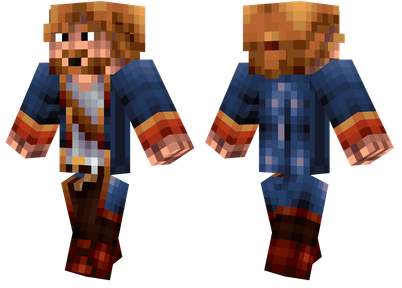
Pirate Minecraft Skins
Minecraft Skins
2024-12-10 04:11:27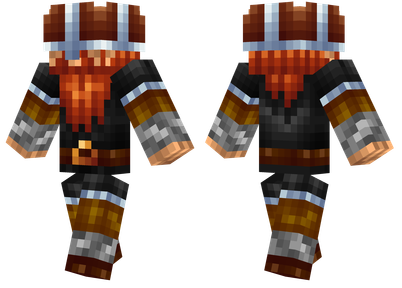
Pirate Minecraft Skins
Minecraft Skins
2024-12-10 04:11:26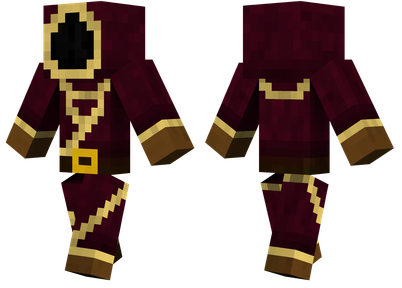
Master Minecraft Skins
Minecraft Skins
2024-12-10 04:11:25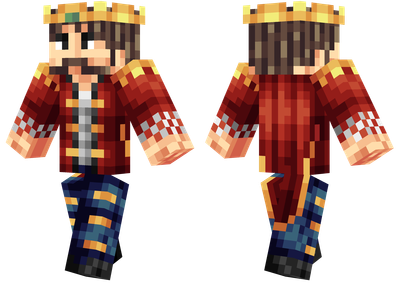
King Minecraft Skins
Minecraft Skins
2024-12-10 04:11:25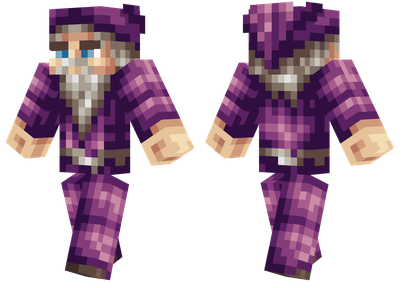
Guide Minecraft Skins
Minecraft Skins
2024-12-10 04:11:24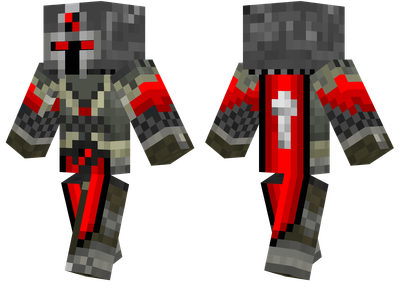
Dark Knight Minecraft Skins
Minecraft Skins
2024-12-10 04:11:23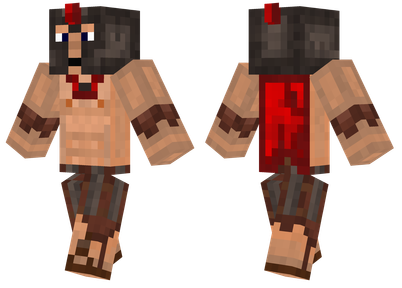
Sparta Minecraft Skins
Minecraft Skins
2024-12-10 04:11:23
Moncraft Skins of the War
Minecraft Skins
2024-12-10 04:11:22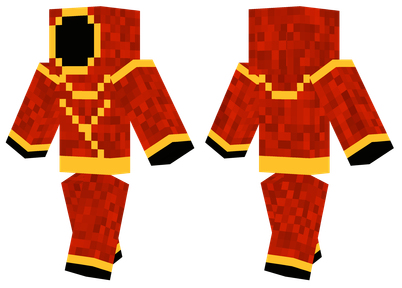
Red Witch Minecraft Skins
Minecraft Skins
2024-12-10 04:11:22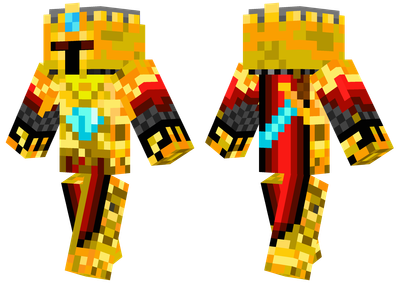
Golden Cavaliers Minecraft S
Minecraft Skins
2024-12-10 04:11:22